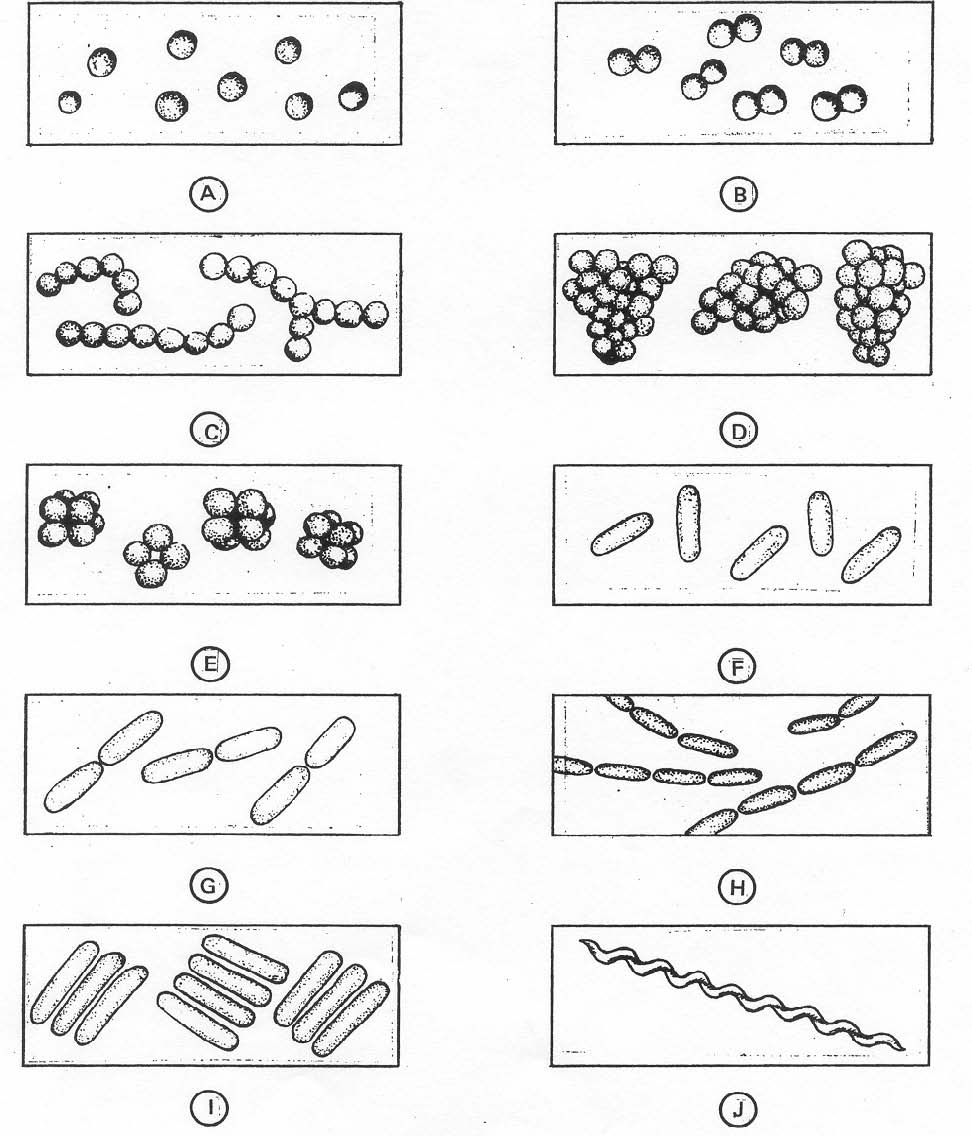Principles of Epidemiology and Microbiology
Lesson 2: Public Health Microbiology
Section II: Bacteria
2-7
2-7. MORPHOLOGY OF BACTERIA
Bacteria range in size from 0.15µ (microns) in diameter for some of the smaller, pathogenic cocci, to 20µ in length for the larger, nonpathogenic bacilli. The three principal shapes of bacteria are shown in figure 2-5.
a. Coccus (Plural, Cocci). Spherical bacteria occurring in any of the following arrangements:
(1) Singly (coccus). Figure 2-5 A.
(2) In pairs (diplococcus). Figure 2-5 B.
(3) In chains (streptococcus). Figure 2-5 C.
(4) In clusters (staphyloccus) Figure 2-5 D.
(5) In clusters of four (tetrad) or eight (cube). Figure2-5 E.
b. Bacillus (Plural, Bacilli). Rod-shaped bacteria occurring in any of the following arrangements:
(1) Singly (bacillus). Figure 2-5 F.
Figure 2-5. Shapes of bacteria
(2) In pairs (diplobacillus). Figure 2-5 G.
(3) In chains (streptobacillus). Figure 2-5H.
(4) In palisades (palisade). Figure 2-5I.
c. Spirals.
(1) Spirillum (plural, Spirilla)--spiral, corkscrew-shaped organisms whose long axes remain rigid while in motion.
(2) Spixochete--a spiral microorganism whose long axis flexes when it is in motion. Figure 2-5 J.
d. Other Variations of Shapes.
(1) Coccobacillus. A short, plump bacillus with rounded ends resembling a coccus in shape and arrangement.
(2) Vibrio. A curved bacillus.


